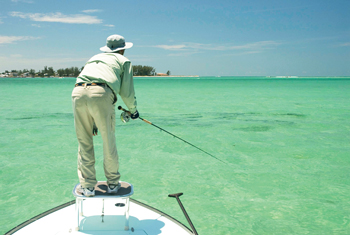Egmont and Passage keys

rUSTY CHINNIS | sun
A school of tarpon crosses the Passage Key flats.
Extending approximately five miles from Anna Maria Island to St. Petersburg, the mouth of Tampa Bay is fronted by the barrier islands of Egmont and Passage keys. The surrounding waters are beautiful, ecologically important and provide anglers with some excellent fishing opportunities. The history surrounding the islands is rich, and in the case of Egmont, goes back some 2,000 years. They seasonally hold some of angling's prized species including tarpon and permit.
Egmont Key is a state park and a National Wildlife Refuge. Steeped in history, the entire island is listed on the National Register of Historic Places. Artifacts and pottery dating back two millennium have been found on the island. The first recorded landing there dates back to a Spanish explorer in 1757 and its recent history spans from the Spanish American War to World War II.
Numerous old structures, vestiges of the Spanish American War, face the gulf, many of which are submerged. The island is home to the Tampa Bay Pilots and has miles of old paver roads, a holdover from a time when there were over 70 buildings and 300 people living there. It has a functioning lighthouse, rebuilt in 1857 after a hurricane destroyed the original structure. Egmont Key was once 50 percent larger than it is today.
Passage Key, the southerly most island, is uninhabited and also a National Wildlife Refuge. It was first established as a bird sanctuary in 1905 by President Theodore Roosevelt. At the time it was a 60-acre island and had a freshwater lake. That all changed in 1921 when it was decimated by a hurricane and has never been the same. Over the past decade, Passage Key has been little more than a constantly changing sandbar, but is building back at the current time. In 1970, the island was designated as a wilderness area. Together the islands hold nesting colonies of all Florida seabirds, including the largest concentration of royal and sandwich terns in Florida.
In the spring and summer, schools of tarpon and permit can be sight fished on vast clear white sand flats that surround Passage Key. During the warm months of the year there also are schools of sharks and large houndfish on the flats. In the cooler months trout, redfish and pompano can be found on the edges of the flats and the grass beds to the east side of the Key. Houndfish, which resemble a large needlefish, gather in schools, and while they are not often pursued by anglers, they're great sport on flies and light tackle. Small white Clousers and lures that resemble baitfish can elicit some explosive strikes.
Egmont Key has a much more varied habitat and also has excellent fishing for tarpon, permit and sharks. Old structures, vestiges of the Spanish American War, can be seen along the western side of the Key, many of which are submerged. They provide perfect habitat for species including pompano, trout and sheepshead, as well as other fish that swim these waters.
On the east side, the Pilot's dock holds sheepshead, black drum, trout and redfish. Extensive grass flats there are rich and home to trout, pompano and redfish. A ship's channel north of the Key provides access to Port Manatee and the Port of Tampa. This deep waterway holds a plethora of gamefish including kingfish, Spanish mackerel and little tunny. The exposed ledges along the channel also are home to mangrove snapper, grouper and sheepshead.
All of the areas mentioned can at times provide pleasant surprises. Whatever your fishing style, the keys and surrounding waters are an angler's dream. There is great fishing year-round, as well as access to flora, fauna and a rich history. More on the fascinating history of the keys can be found online.

